When you’re planning a food photoshoot, the camera angle you shoot with is just as important as everything else in your scene, so knowing how to choose the best angle for food photography can help you create a more powerful image.
If you want to stop guessing and start making more informed composition decisions, then this post is for you!
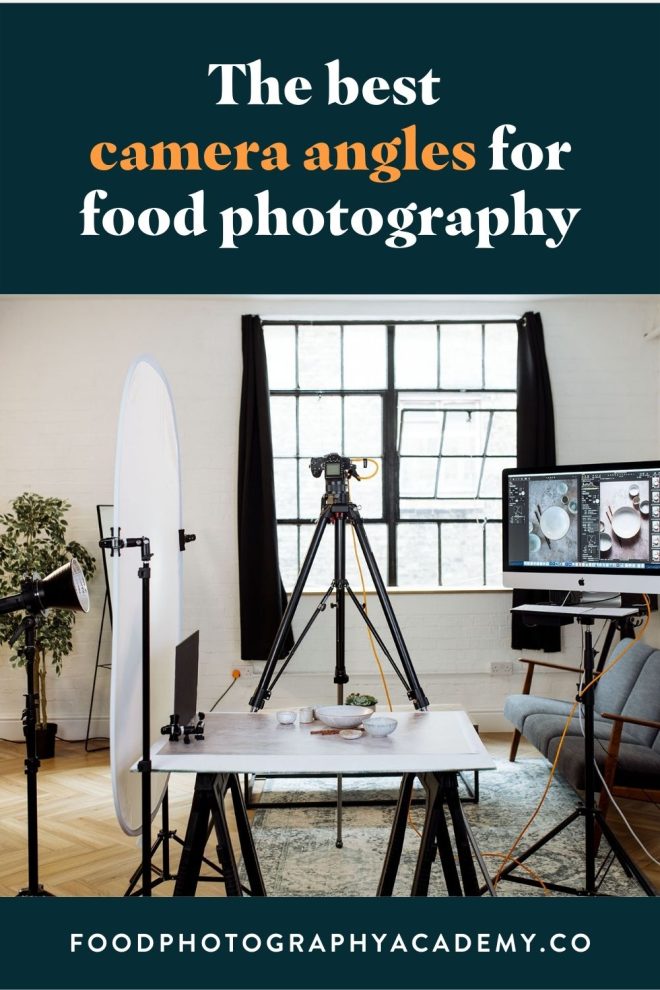
If you prefer to watch, then hit play on the video below!
Choosing the best camera angle for a food image is subjective, but there’s really more science behind it than you might think. What really helped me transform my food photography was starting to plan out my pictures before I started my photoshoot. This helped me think through the composition and the camera angles so I wasn’t walking into a shoot with no plan.
The angle you shoot with is as much a part of your composition as anything else.
So before you go any further, download and print off your free food photography composition kit and let’s jump right in and take a look at the 3 best angles for your food photography
Free Resource
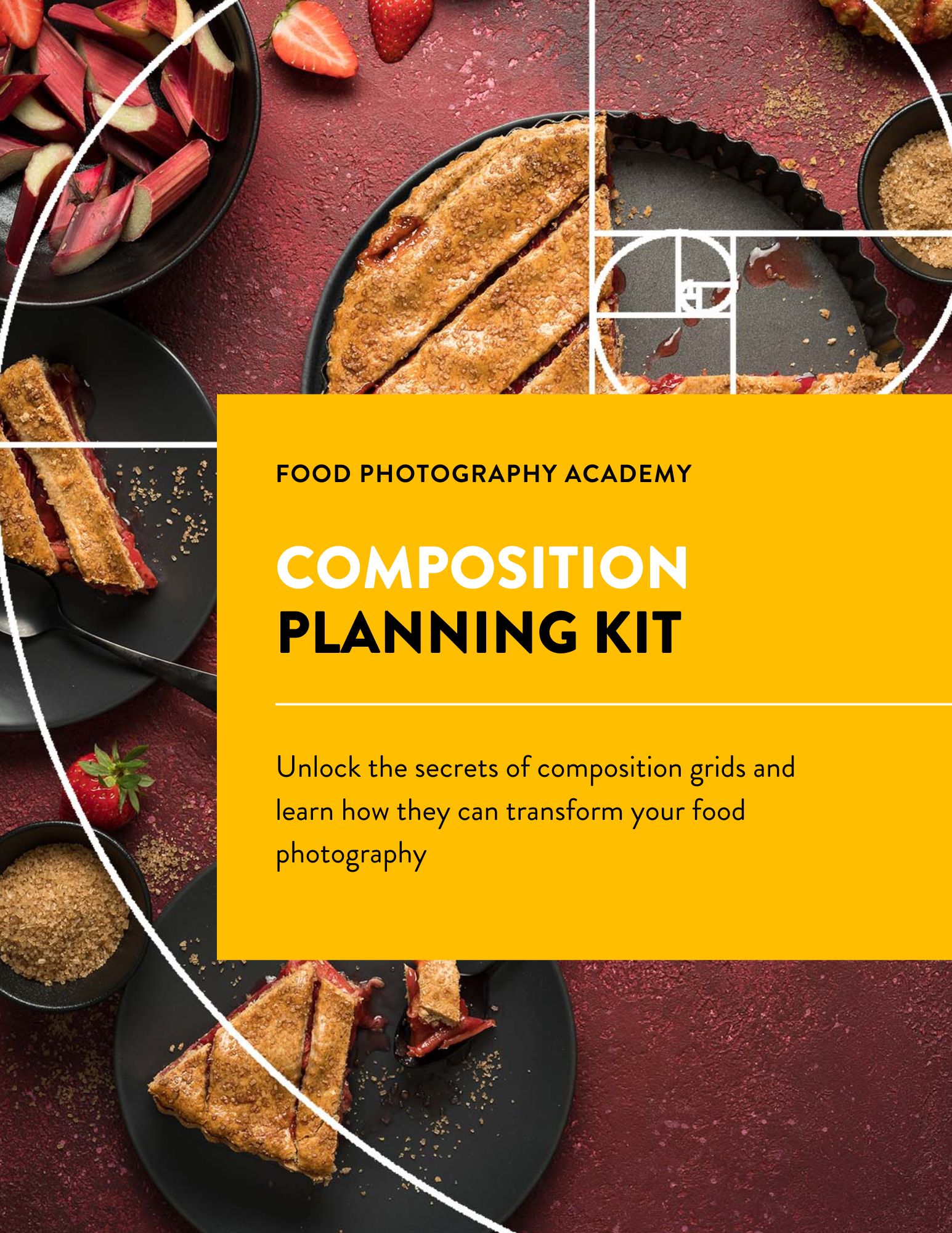
Stop guessing and start implementing with my foolproof composition system. Elevate your food photography from good to great with composition techniques.
Overhead food photography (90° Flat lay)
The flat lay is probably the most popular angles for food photography, and for good reason! Unless your food is “closed” when looking at it from above (like a sandwich, or a burger with the bun on) nearly every type of food can be shot from overhead. You only need to scroll through Instagram briefly to realise that food photography is all about the flat lays!
A food photography flatlay is also one of the best storytelling angles. It’s perfect for dishes where all the detail is on top (like this noodle soup) or when you want to show a wide table scene.
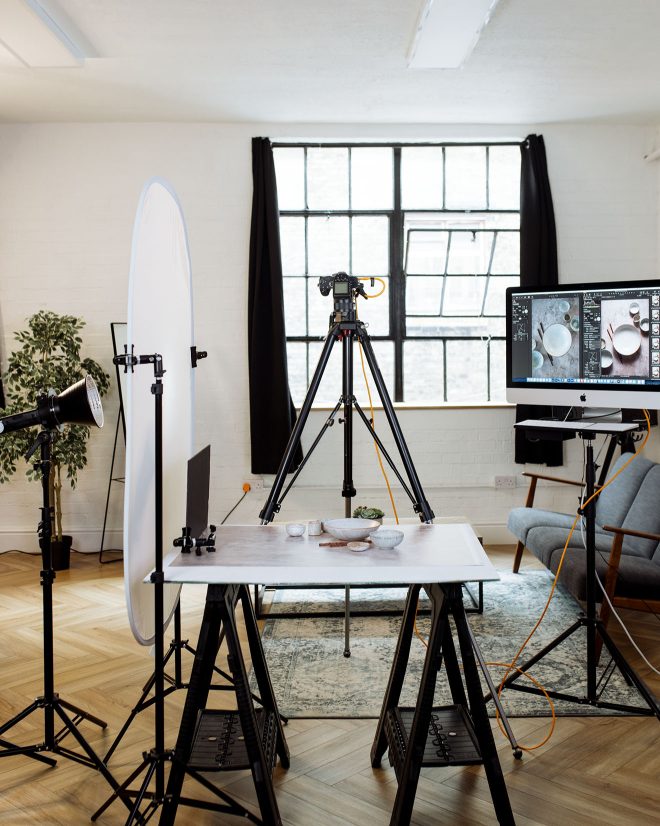
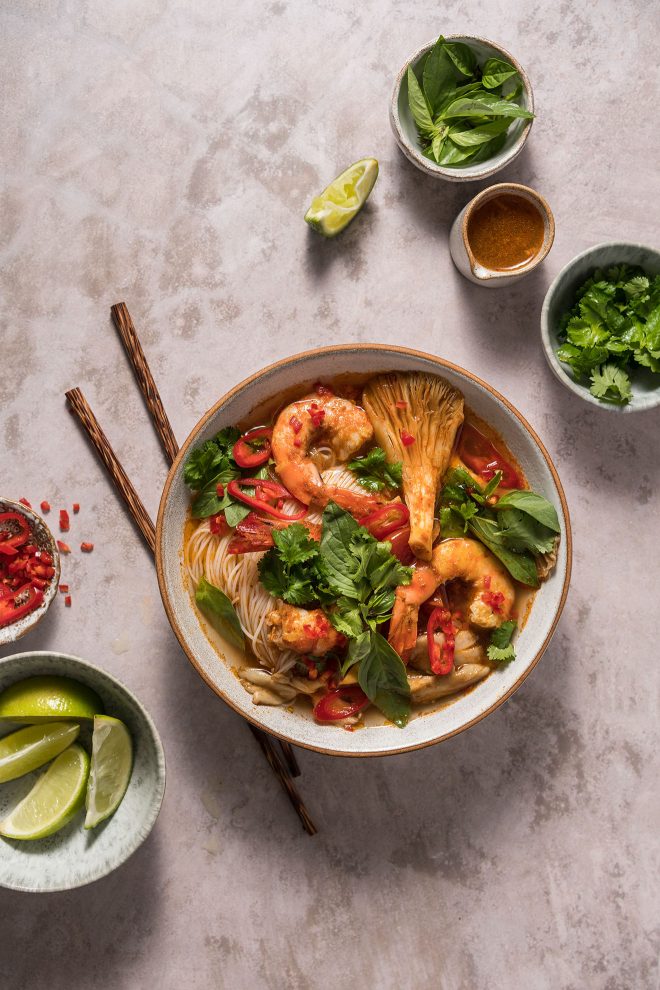
In terms of the best lens for a flat lay, it depends on the look you’re going for. A wider angle lens with a more narrow aperture (f/5.6 upwards) is best for creating these shots and can be useful for capturing wide scenes, but if you’re going for a detail-orientated close up top-down, you might want to consider using a long focal length macro lens
Straight on Food Photography Angle (0°)
The straight-on angle is good for subjects like burgers, sandwiches, pancake stacks, etc, or any food where there’s more detail on the side/inside than the top.
It’s an angle that also allows you to utilise the background to add additional props and objects which can be useful to build out your food story.
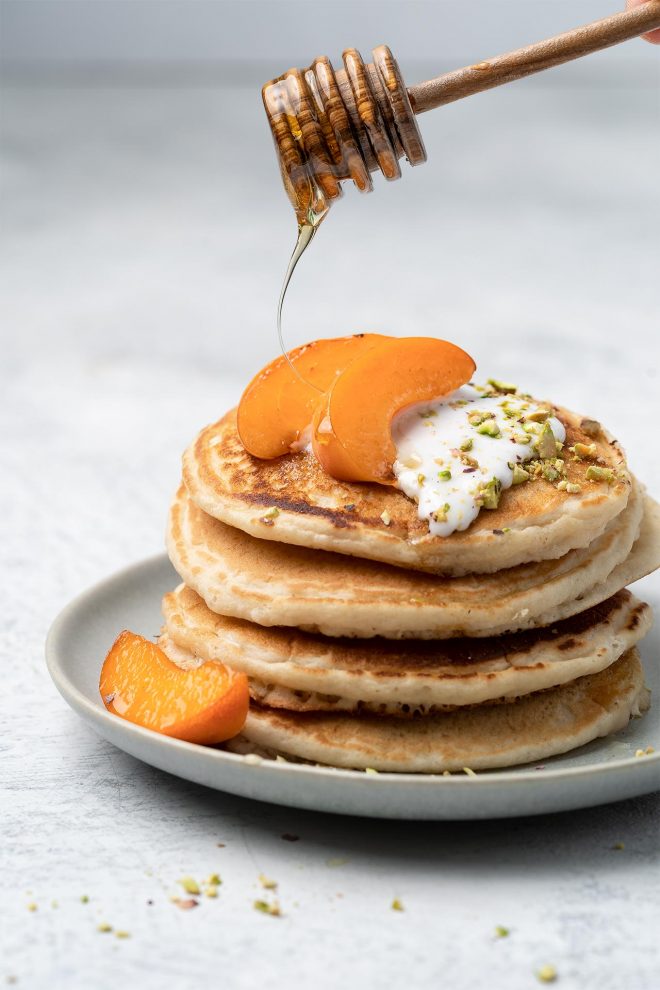
In this shot of the pancakes, I used a straight-on angle plus a long focal length macro lens to make the pancake stack look heroic and powerful. I also wanted that honey swirl action to be the focal point of the image, and the straight-on angle worked best to highlight that.
Do remember that the focal length of the lens you’re shooting with will have an impact on the general “look” of your photo.
My favourite way to take straight-on shots is with a focal length of anything from 60mm upwards, but normally I use my 90mm macro lens. If you use too wide of an angled lens for these shots, you’ll end up with some weirdly stretched lines because of your wider field of view.
Free Resource

Stop guessing and start implementing with my foolproof composition system. Elevate your food photography from good to great with composition techniques.
45° degree angle food photography
I like to think of the 25-75° range as a fluid angle. It’s basically everything in between the straight-on (0°) and the flat lay (90°). It’s hard to know at exactly what point your photo will look best in this range, as it depends on how much detail there is on top of your subject.
Typically, a good starting point is to shoot flatter subjects somewhere between 90° and 45° and taller subjects from straight on and 45°.
45° Angle Food Photography
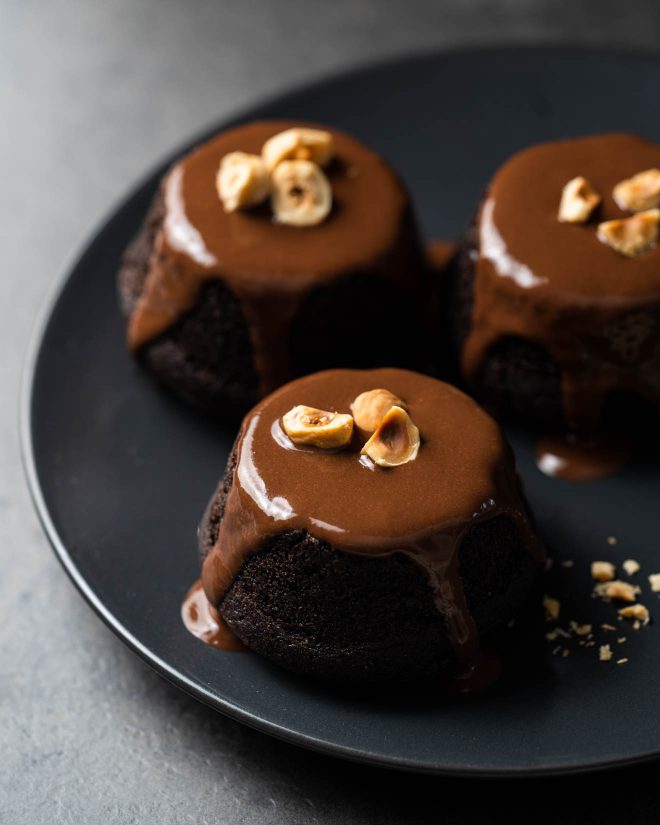
I shot these chocolate cakes at about a 45° angle, with a long focal length lens. They aren’t very tall, but most of the detail is on the top with the toasted hazelnuts, and that little drip down the sides, so a straight-on angle would have missed a lot of that top detail.
A flat lay would also miss the texture on the sides and potentially hide the overall shape of the cakes too.
By combining this 45° angle with backlighting at an angle, I was able to capture a really nice specular highlight on the ganache, and the motion of the drip.
75° Angle Example
Let’s take a look at another example here, this time with a 75° angle. This angle is just a little bit down from a flat lay, so you get a largely overhead view, but you do still get a little bit of side view too.
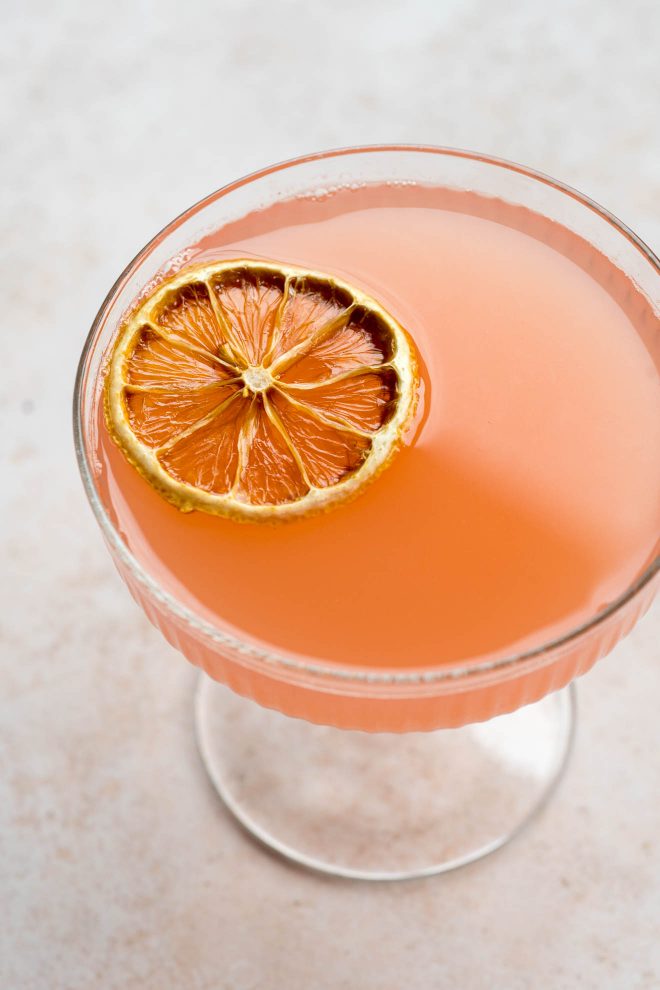
In this drink example, the 75° angle allows you to mostly focus on the garnish, but still see the shape of the glass, rather than just floating circles. This angle is really effective for drink photography where you still want some depth, but you don’t have any layers or particular interest to highlight on the side of the glass.
Before we get into the food photography angles to avoid, you can download my printable food photography composition planning kit to help you walk into your shoots with a vision 👇
Free Resource

Stop guessing and start implementing with my foolproof composition system. Elevate your food photography from good to great with composition techniques.
Angles to Avoid
Ok, So now we’ve talked about which angles work great in food photography, let’s take a quick look at which angles to avoid. And yes, you’re going to get to see some of my very embarrassing early food photos!
Anything Slanty
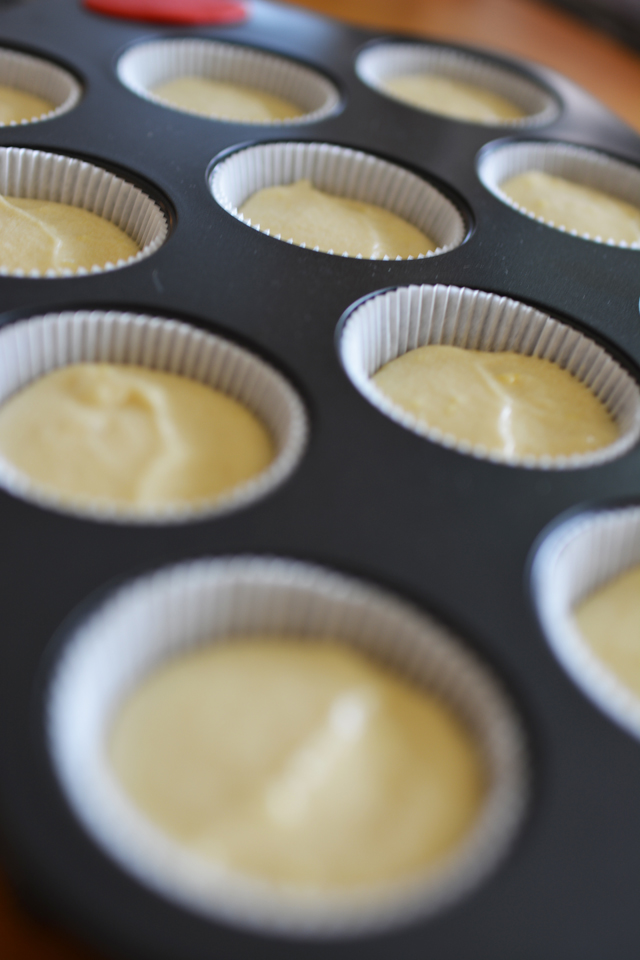
Keep your horizons straight. Those diagonal shots and Dutch angles might work well in selfies, but if your food looks like it’s about to slide off the photo, your viewer will probably want to tilt their head to look at the photo properly… don’t make them do that!
The too close up
Ok, so this isn’t really a camera angle, but I think it fits in here quite nicely.
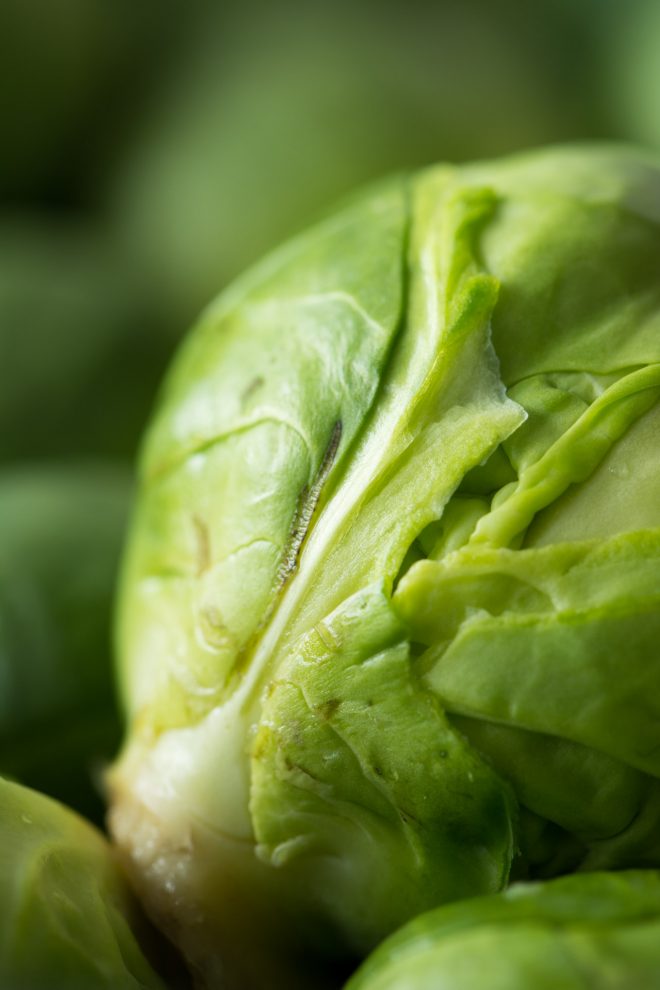
There’s nothing wrong with a close up of your food, but if you’re so close to your subject that the viewer will have to guess what it is, pull back a little bit
The Odd Looking Focal Length
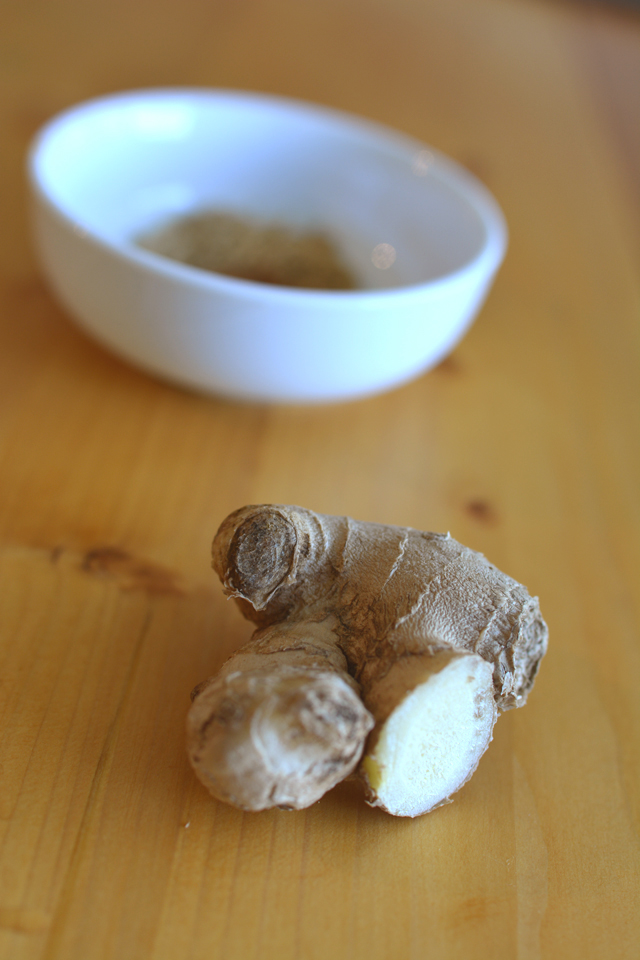
Again, not strictly an angle in itself but more about how to use the right angles for the lens you’re using. For more information on the best camera lenses for food photography camera angles, check out my other post all about lenses.
Planning your camera angles for food photography composition
When you’re planning your food photos and thinking about what angles you’re going to use, you should ask yourself these questions
1) What am I shooting?
2) How am I styling it?
The answer to the first question will sometimes tell you the best camera angle for the food, as certain foods lend themselves much better to a particular angle better than others. Think about where the most interesting detail on your food is, and what camera angle will get you that hero shot.
But what about foods that don’t have an obvious “most flattering” angle? Well, this is where the answer to your second question becomes really important. The best angle will really depend on how you’re styling your food: if your food is in an opaque bowl, with lots of detail on top, then a top-down or 75° – 45° angle would probably work best, but if you’re layering something like overnight oats or a smoothie in a tall glass, then a 45° – straight on angle would work better.
My free printable composition planning kit is designed to help you think all of this through, so you can walk into your shoot with a vision, already planning the best angle.
Free Resource

Stop guessing and start implementing with my foolproof composition system. Elevate your food photography from good to great with composition techniques.
Food photography camera angle tips
You guys know how much of a fan of a tripod I am, but it can be super useful to explore your subject freehand first to help you find the best angle. Sometimes it can surprise you what the best camera angle can be, so take a bit of extra time for this exploration first.
I hope you found some useful tips about finding the best angle in your food photography. Don’t forget to download my free composition kit below before you go!
Free Resource

Stop guessing and start implementing with my foolproof composition system. Elevate your food photography from good to great with composition techniques.
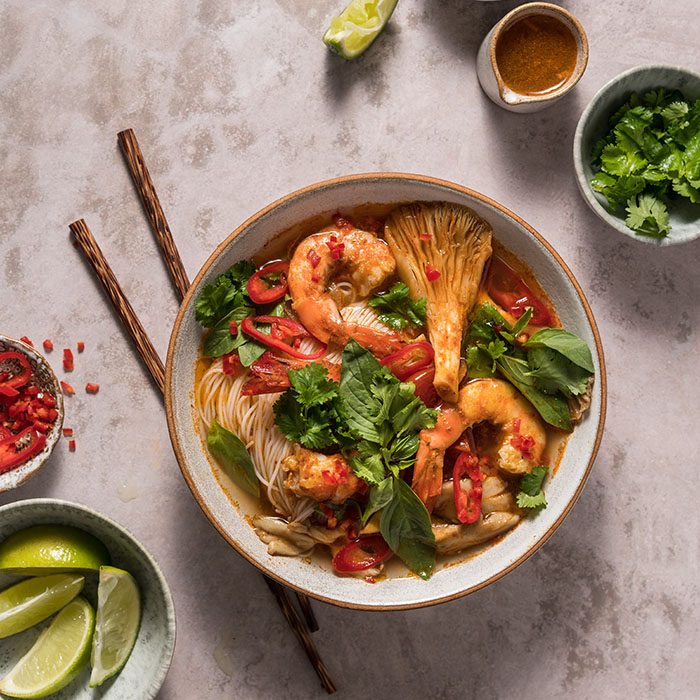
This is utterly stupid and unbelievable! Couldn’t barely even read this because i dont speak idiot.
Nice post
Wow, significant, I learned a lot, thanks for sharing 🙂
So glad Christine! Thanks for reading!
[…] by numbers – 45, -45, 75, 90 degrees. Lauren from Food Photography Academy has a great post the 3 best camera angles for your food photography + ones you should avoid. We are not affiliated nor have we taken her course, but her blog post covers angles much better […]
[…] Here are few more suggestions on shooting food from an angle: […]
[…] Camera angle is also very important in food photography. Do you want to shoot from table level, perhaps to emphasize the size of the food, a 45-degree angle as a diner might view their plate, or do what is called a “flat lay,” a shot from directly above? Think about this, and if in doubt, make shots from various angles. […]
[…] Camera angle is also very important in food photography. Do you want to shoot from table level, perhaps to emphasize the size of the food, a 45-degree angle as a diner might view their plate, or do what is called a “flat lay,” a shot from directly above? Think about this, and if in doubt, make shots from various angles. […]
Great video, thank you so much, Lauren!
How can I know that my camera is at 45°
It’s definitely not an exact science. 45° is about halfway between your camera pointing straight ahead, or straight at the floor. Some tripod heads have an angle measurement on them which can be really helpful if you want to be a bit more precise!
This is great… Thnx for sharing this info.